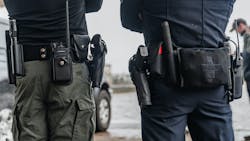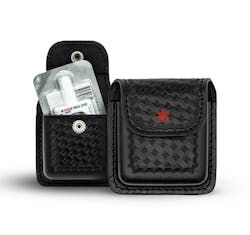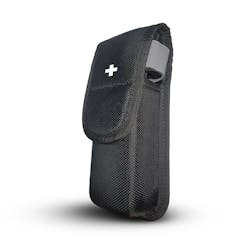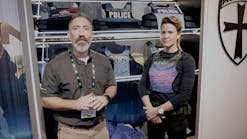Duty Gear Trends: Off the Waist and More Modular Than Ever
Undoubtedly, thousands of lives are now transformed by the inclusion of new technologies and trends to help people perform their activities effectively and efficiently. Though all professions are witnessing these changes, the most interesting changes are happening in law enforcement and first response. Gear for law enforcement officers and first responders must nowadays play a delicate balancing act with style, fit and function.
This article appeared in the September issue of OFFICER Magazine. Click Here to view the digital edition. Click Here to subscribe to OFFICER Magazine.
You might be looking to update the look of your law enforcement or first response agency with new gear to improve officer safety or put them into more comfortable gear. Irrespective of your reasons, knowing the choice to make might be daunting with the recent changes. Here are some of the modern trends in the duty gear industry to guide your shopping.Outer carriers for armor
One of the main trends in duty gear is integrating body armor into officers’ uniforms. First responders and public safety officers use and carry more equipment nowadays than ever before. Most agencies require them to carry body cameras, conceal their communication wires, carry a second pair of handcuffs and have a backup weapon.
More and more law enforcement agencies require their officers to carry medical equipment like tourniquets because of increased active shooter incidents. The rapid progression of the opioid crisis has also forced law enforcement officers to carry drugs like NARCAN in pouches.
Over the last few years, most agencies have moved from traditional concealed carriers to external carriers, according to James Witmer, the CEO of the OfficerStore. The outer carriers are primarily meant to shift the weight of equipment from an officer’s duty belt, thus preventing the back and hip issues arising from carrying too much weight on the hip. These carriers disperse the weight of equipment from the hip to the user’s torso.
Outer carriers are also easier to put on and take off while providing better airflow between the user’s body and ballistics. Moreover, they reduce the bulk of an officer’s gear set up to ensure that he/she maintains the mobility and agility necessary when responding to emergencies.
Increased officer safety
First responders and law enforcement officers should have their gear within easy reach to respond appropriately in extreme situations. They carry multiple small items that should be accessed within the shortest possible time to guarantee their safety by supporting the quickest response to deescalate a dangerous situation. In this regard, duty gear has eased access to everyday carry items by placing them in MOLLE (modular lightweight load-carrying equipment) systems that give more ‘real estate’ for the extra tools while reducing strain on the back.
Less weight on the duty belt
Duty gear has become more user-friendly. Most manufacturers are taking more items off the duty belt to give officers room on the belt and make it easier to access everyday carry items that have been moved from the belt to the body. Matteo Recanatini, the vice president of marketing at Hero’s Pride, asserts this is the motivation behind his company’s AirTek line of duty gear. Reducing weight on Hero Pride’s duty belt enhances the basic operation of duty gear while maintaining muscle memory actions and quick response. The weight of the company’s duty belt and its attachments has been reduced by up to 30% while maintaining secure wear through the use of features like military-grade snaps.Lighter, stretchable, and comfortable fabrics
Agencies are also now paying more attention to the fabrics used for their duty gear. While officers’ uniforms were rigid in the past, stretch is now an important element to keep users comfortable. Stretch fabric for duty gear incorporates additional elastic fabrics like Spandex or Lycra, making it easy for law enforcement officers and first responders to climb, kneel and run while resisting wrinkling for a professional look.
According to Travis Harney, the senior brand manager at Galls, another element agencies are looking for in duty gear fabric is being lightweight to ensure the weights of their uniforms do not weigh down officers. There are also specialty finishes being added to the fabrics used for duty gear to boost the comfort of users by pulling sweat from the skin to keep the body cool. Some companies are also incorporating duty gear fabrics with durable water and stain repellent to keep the uniforms dry and looking professional. The most commonly used stain and water repellent on duty gear is Teflon.
First responders and law enforcement officers spend most, if not all, of their working lives in duty gear. The gear must be as comfortable as possible for them and support their work. The above trends and changes are designed to guarantee this. Duty gear manufacturers are also continually improving their products to fulfill technological needs and resolve or mitigate health issues among users, so you can expect more in the future.
About the Author
Rick Levine is the Executive Director of the Network Association of Uniform Manufacturers and Distributors (NAUMD). More info at NAUMD.com
This article appeared in the September issue of OFFICER Magazine.

Rick Levine | Executive Director at NAUMD
Rick Levine is the Executive Director of NAUMD, a global network of uniform manufacturers and distributors. Contact him at [email protected] and visit NAUMD.com for more information.





